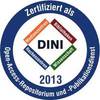In: Journal of Neuroinflammation, 12 (2015), Nr. 196. pp. 1-12. ISSN 1742-2094
Preview |
PDF, English
Download (1MB) | Lizenz:  Creative Commons Attribution 3.0 Germany Creative Commons Attribution 3.0 Germany
|
Abstract
Background: Neuromyelitis optica spectrum disorder (NMOSD) and multiple sclerosis (MS) have a similar clinical phenotype but represent distinct diseases, requiring different therapies. MicroRNAs (miRNAs) are short non-coding RNAs whose expression profiles can serve as diagnostic biomarkers and which may be involved in the pathophysiology of neuroinflammatory diseases. Here, we analyzed miRNA profiles in serum and whole blood of patients with NMOSD and clinically isolated syndrome (CIS)/relapsing-remitting MS (RRMS) as well as healthy controls by next-generation sequencing (NGS). Methods: MiRNA expression profiles were determined by NGS in sera of patients with aquaporin-4 antibody-positive NMOSD (n = 20), CIS/RRMS (n = 20), and healthy controls (n = 20) and in whole blood of patients with NMOSD (n = 11), CIS/RRMS (n = 60), and healthy controls (n = 43). Differentially expressed miRNAs were calculated by analysis of variance and t tests. All significance values were corrected for multiple testing. Selected miRNAs were validated in whole blood of patients with NMOSD (n = 18) and CIS/RRMS (n = 19) by quantitative real-time polymerase chain reaction (qRT-PCR). Results: None of 261 miRNAs detected in serum but 178 of 416 miRNAs detected in whole blood showed significantly different expression levels among the three groups. Pairwise comparisons revealed 115 (NMOSD vs. CIS/RRMS), 141 (NMOSD vs. healthy controls), and 44 (CIS/RRMS vs. healthy controls) miRNAs in whole blood with significantly different expression levels. qRT-PCR confirmed different expression levels in whole blood of patients with NMOSD and CIS/RRMS for 9 out of 10 exemplarily chosen miRNAs. In silico enrichment analysis demonstrated an accumulation of altered miRNAs in NMOSD in particular in CD15+ cells (i.e., neutrophils and eosinophils). Conclusions: This study identifies a set of miRNAs in whole blood, which may have the potential to discriminate NMOSD from CIS/RRMS and healthy controls. In contrast, miRNA profiles in serum do not appear to be promising diagnostic biomarkers for NMOSD. Enrichment of altered miRNAs in CD15+ neutrophils and eosinophils, which were previously implicated in the pathophysiology of NMOSD, suggests that miRNAs could be involved in the regulation of these cells in NMOSD.
| Document type: | Article |
|---|---|
| Journal or Publication Title: | Journal of Neuroinflammation |
| Volume: | 12 |
| Number: | 196 |
| Publisher: | BioMed Central |
| Place of Publication: | London |
| Date Deposited: | 25 Jan 2016 10:49 |
| Date: | 2015 |
| ISSN: | 1742-2094 |
| Page Range: | pp. 1-12 |
| Faculties / Institutes: | Medizinische Fakultät Heidelberg > Medizinische Universitäts-Klinik und Poliklinik Medizinische Fakultät Heidelberg > Neurologische Universitätsklinik |
| DDC-classification: | 610 Medical sciences Medicine |









